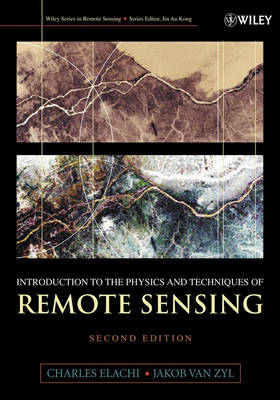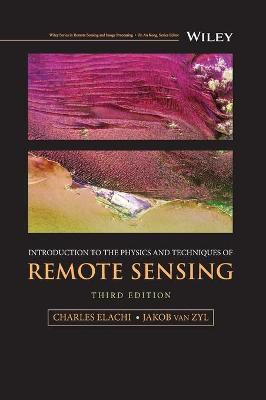Wiley Series in Remote Sensing and Image Processing
1 primary work • 2 total works
Book 35
Introduction to the Physics and Techniques of Remote Sensing
by Charles Elachi and Jakob J. van Zyl
Chapters 8 through 12 then cover remote sensing in the study of atmospheres and ionospheres. Each chapter first presents the basic interaction mechanism, followed by techniques to acquire, measure, and study the information, or waves, emanating from the medium under investigation. In most cases, a specific advanced sensor is used for illustration. The book is generously illustrated with fifty percent new figures. Numerous illustrations are reproduced in a separate section of color plates. Examples of data acquired from spaceborne sensors are included throughout. Finally, a set of exercises, along with a solutions manual, is provided. This book is based on an upper-level undergraduate and first-year graduate course taught by the authors at the California Institute of Technology. Because of the multidisciplinary nature of the field and its applications, it is appropriate for students in electrical engineering, applied physics, geology, planetary science, astronomy, and aeronautics. It is also recommended for any engineer or scientist interested in working in this exciting field.
Physics and Techniques of Remote Sensing, Third Edition
by Charles Elachi and Jakob J. van Zyl
DISCOVER CUTTING EDGE THEORY AND APPLICATIONS OF MODERN REMOTE SENSING IN GEOLOGY, OCEANOGRAPHY, ATMOSPHERIC SCIENCE, IONOSPHERIC STUDIES, AND MORE
The thoroughly revised third edition of the Introduction to the Physics and Techniques of Remote Sensing delivers a comprehensive update to the authoritative textbook, offering readers new sections on radar interferometry, radar stereo, and planetary radar. It explores new techniques in imaging spectroscopy and large optics used in Earth orbiting, planetary, and astrophysics missions. It also describes remote sensing instruments on, as well as data acquired with, the most recent Earth and space missions.
Readers will benefit from the brand new and up-to-date concept examples and full-color photography, 50% of which is new to the series. You'll learn about the basic physics of wave/matter interactions, techniques of remote sensing across the electromagnetic spectrum (from ultraviolet to microwave), and the concepts behind the remote sensing techniques used today and those planned for the future.
The book also discusses the applications of remote sensing for a wide variety of earth and planetary atmosphere and surface sciences, like geology, oceanography, resource observation, atmospheric sciences, and ionospheric studies. This new edition also incorporates:
- A fulsome introduction to the nature and properties of electromagnetic waves
- An exploration of sensing solid surfaces in the visible and near infrared spectrums, as well as thermal infrared, microwave, and radio frequencies
- A treatment of ocean surface sensing, including ocean surface imaging and the mapping of ocean topography
- A discussion of the basic principles of atmospheric sensing and radiative transfer, including the radiative transfer equation
Perfect for senior undergraduate and graduate students in the field of remote sensing instrument development, data analysis, and data utilization, Introduction to the Physics and Techniques of Remote Sensing will also earn a place in the libraries of students, faculty, researchers, engineers, and practitioners in fields like aerospace, electrical engineering, and astronomy.

